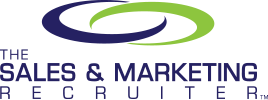The Resume
Resume Writing – Tips and Tricks for a Great Resume
Here are some tips and hints about resume writing. These are all things that you can do to help give potential employers insight into your strongest professional attributes.
NOTE: To include yourself in our database, click here to submit your resume.
Your resume should include the following four pieces of information:
-
- Contact information
Make yourself easily accessible by phone or email. Be sure that your voicemail message is professional. You don’t want a potential employer to get the wrong impression from an unprofessional message or greeting. Do not include personal information, such as marital status or age, on your resume. - Objective/title
Some people believe that if you include an objective, it might limit your chances of being selected for an interview and/or if your objective doesn’t match the recruiter’s needs at the time, you may miss out on a great opportunity. On the flip side, if you know exactly what you want, why not say it? It may be best to take a broad approach. - Summary
Include your title and years of experience first, then list special skills. Next, talk about your character traits or work style. Remember that this is a summary. Don’t go over three sentences. - Professional experience
List each position held in reverse chronological order going back at least 10 years. If you held multiple positions with the same employer, be sure to list all of them to show how you have progressed. You should describe your responsibilities and your accomplishments.
- Contact information
The body of the position description has two parts:
-
-
-
- A description of your responsibilities
- Your accomplishments
-
-
Be Truthful
Be truthful when putting together your resume. A resume in and of itself may not get your dream job, but if you make mistakes while composing it, it might kill any chance for an interview. One big mistake is lying about your experience. Augmenting your credentials with a “little fiction” might help you to land the job, but you almost certainly will be found out. This could cause you to be fired down the road. Worse, you will have greatly damaged your reputation within your chosen industry.
Industry people travel in the same circles. It’s highly likely that your employer will someday bump into someone who knows you, so don’t say you were a Phi Beta Kappa if you were an average student. Even a little “white lie” can backfire.
Organizational Formats for Your Resume
There are two main organizational format options for your resume: the Feature-Accomplishment-Benefit option and the Situation-Solution-Outcome option. Both of these are outlined below:
Feature-Accomplishment-Benefit
Use the Feature-Accomplishment-Benefit format to organize your skills and sell your accomplishments.
Feature: The actual responsibilities
Accomplishment: The performing of the responsibilities
Benefit: How your performance affected your employer
Situation-Solution-Outcome
This format might be used to demonstrate your problem-solving capabilities.
Situation: What situation was your company facing?
Solution: What did you do to solve the problem?
Outcome: What was the outcome?
Presentation Formats for Your Resume
There are many types of resumes, but the one we recommend is the traditional. There are several different types of traditional resumes. One of the most popular traditional resume formats is the historical/chronological resume. This type is set up in reverse chronological order, most recent first. This format is best suited for those people with significant experience in their field.
Another type of traditional resume is the functional. This format uses titles (or job functions) as headings and may ignore the historical format. Recent college graduates use this style.
A third type of traditional resume is the analytical. This format uses skill fields as headings and also ignores the historical sequence. If you have diverse experience or are trying to change careers, use this style.
Top 12 accomplishments of interest to employers:
-
-
- Increased revenues
- Saved money
- Increased efficiencies
- Cut overhead
- Increased sales
- Improved workplace safety
- Purchasing accomplishments
- New products/new lines
- Improved record keeping process
- Increased productivity
- Successful advertising campaign
- Effective budgeting
-
